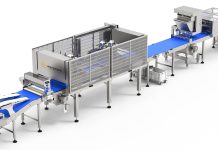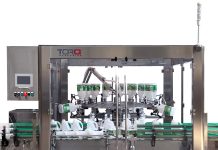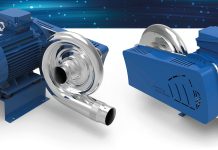At present the food market is in search for functional ingredients that could enrich the fi nished product at reasonable costs. For this purpose experiments keep providing evidences on the health effects of many nutraceutical products, i.e. substances contained in food useful for the prevention and/or treatment of defi ciency or pathological states. In particular the extra virgin olive oil contains a series of “minor phenolic components” giving their particular aroma and taste. This product is the main lipydic component of the Mediterranean diet and has been associated to a minor cardiovascular risk incidence and some neoplastic diseases. On the basis of the role played by the oxidation of low density lipoproteins (LDL) on the beginning of cardiovascular diseases, a number of studies tried to clarify the antioxidating action of the phenols of olive oil. In particular hydroxytyrosol and oleuropein can inhibit the oxidation of LDL, to block free radicals including superoxyd radicals and exert a series of biological actions such as platelet inhibition and the strengthening of the mediated immune nitric oxyd response of macrofagus. Besides, a number of scientifi c works report the importance of the content in phenolic substances and in particular of hydroxytyrosol for the stability of the product. In fact, the capacity of oil to resist oxidization (growing rancid) is mainly due to the presence of some phenolic substances. These compounds perform the antioxydating effect oxydizing instead of the fats and, for that reason, consume over time and therefore can represent an index of the aging degree of an oil or of its preservability. Some works have been made to evaluate the relationship between the content in total polyphenols and the stability of oil to oxydation. Instead, studies on their incidence of the phenolic compound in the product on shelf life have been made only recently. This context has proved the antioxidizing action of some derived products of secoyridhiroids, such as 3,4-DHPEA-EDA and 3,4-DHPEA-EA. In fact these compounds showed a high protective action even during frying.
 The main phenolic compounds in olive oil are: tyrosol, hydroxytyrosol and their derived products, phenolic acids such as caffeic and derived products, fl avones and fl avonoids, oleuropeine and their relative products of hydrolysis and rearrangement. The concentration of thee compounds in the product is strongly infl uenced by the extraction techniques used during its production process, for instance the loss of secoyrdoides and phenyl-alcohols during kneading. The word kneading indicates the mixing of the paste discharged by the crusher or the mills to reduce the water/oil emulsions and favour the amalgamation of the oil drops. Kneading is considered to be the critical phase of the whole productive process. In fact, the composition of the oil is signifi cantly modifi ed during this phase by cause of the activation of some degradation processes due to the breakage of the fruit. One of the most important processes is the one leading to the biogeneration of new compounds, considered able to infl uence the antioxidating characteristics or the aroma of olive oil. In addition, we know very well that besides from extraction techniques, the accumulation of phenols in oil depends also from the type of cultivar of the fruit and the agronomic techniques used to produce olives. However, the optimization of these techniques can signifi cantly contribute to the improvement of the quality of the product and the yield of the process and, as a consequence of that, of the production costs. According to the offi cial standard the virgin olive oil can be produced by using only physical and mechanical means, but the current systems are able to extract no more than 80-90% of the oil container in the pulp of olive. The global quantity of residual oil in the residual products (marc and vegetation water) reaches values up to 40 kg/ton of processed olives, which means a big loss of money for the olive –growing sector. Besides, the product obtained is often characterized by medium/low quality levels, above all when pressing is used. These problems cannot be solved by using a double extraction cycle, which would mean an increase in the production costs and the obtainment of positive effects only on yields without improving the quality of the product. Anyway, it is worth highlighting that the technological factor does not succeed in increasing the quality level when the raw material transformed (i.e olives) is not of good quality. In particular the best olives to be processed are those not damaged by biotic or abiotic agents, not stored for too long time and harvested at the correct ripeness stage.
The main phenolic compounds in olive oil are: tyrosol, hydroxytyrosol and their derived products, phenolic acids such as caffeic and derived products, fl avones and fl avonoids, oleuropeine and their relative products of hydrolysis and rearrangement. The concentration of thee compounds in the product is strongly infl uenced by the extraction techniques used during its production process, for instance the loss of secoyrdoides and phenyl-alcohols during kneading. The word kneading indicates the mixing of the paste discharged by the crusher or the mills to reduce the water/oil emulsions and favour the amalgamation of the oil drops. Kneading is considered to be the critical phase of the whole productive process. In fact, the composition of the oil is signifi cantly modifi ed during this phase by cause of the activation of some degradation processes due to the breakage of the fruit. One of the most important processes is the one leading to the biogeneration of new compounds, considered able to infl uence the antioxidating characteristics or the aroma of olive oil. In addition, we know very well that besides from extraction techniques, the accumulation of phenols in oil depends also from the type of cultivar of the fruit and the agronomic techniques used to produce olives. However, the optimization of these techniques can signifi cantly contribute to the improvement of the quality of the product and the yield of the process and, as a consequence of that, of the production costs. According to the offi cial standard the virgin olive oil can be produced by using only physical and mechanical means, but the current systems are able to extract no more than 80-90% of the oil container in the pulp of olive. The global quantity of residual oil in the residual products (marc and vegetation water) reaches values up to 40 kg/ton of processed olives, which means a big loss of money for the olive –growing sector. Besides, the product obtained is often characterized by medium/low quality levels, above all when pressing is used. These problems cannot be solved by using a double extraction cycle, which would mean an increase in the production costs and the obtainment of positive effects only on yields without improving the quality of the product. Anyway, it is worth highlighting that the technological factor does not succeed in increasing the quality level when the raw material transformed (i.e olives) is not of good quality. In particular the best olives to be processed are those not damaged by biotic or abiotic agents, not stored for too long time and harvested at the correct ripeness stage.




